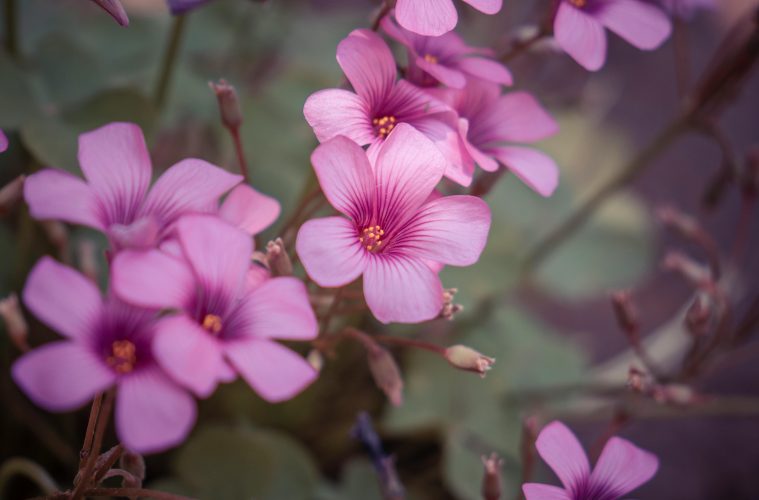Long overlooked as a pesky weed, the humble Oxalis has quietly been writing its own story – one of resilience, beauty and deep South African roots. Beneath its dainty leaves and candy-coloured blooms lies a plant far more remarkable than its reputation suggests.
Many gardeners have spent seasons pulling out Oxalis, convinced it’s an unwelcome visitor creeping through pots and cracks in the paving. But look closer, and you’ll see one of the Cape’s most fascinating botanical treasures – a genus that has perfected the art of survival while painting our landscapes in bursts of pink, yellow and white.
A native with flair
The best-known Oxalis of all, Oxalis pes-caprae, is familiar to most of us as the cheerful yellow “suring” of childhood summers. Those tangy, lemony stems once served as nature’s sherbet – a treat picked straight from the garden. Yet this is just one of more than 200 South African species, many of which are native to the Cape Floristic Region.
Each autumn, when the heat softens and the rains return, Oxalis wakes from dormancy to put on a show worthy of the finest garden display. Their flowers open in a rainbow of shades – delicate pinks, vivid magentas, soft yellows and snowy whites – each species with its own form and flair. They’re not weeds at all, but an intricate collection of miniature masterpieces.
Built to endure
What makes Oxalis truly special is its quiet ingenuity. Each plant grows from a bulb that renews itself every year, shedding its old layers like a fresh start. These bulbs can live for decades, tucked safely underground, waiting patiently for the right conditions to bloom again. Some Oxalis patches may have been flowering in the same spot for generations.
Their seeds are just as clever. Once ripe, they burst open with surprising force, catapulting themselves metres away to find new ground. Others spread clonally – creating identical copies without needing to flower at all. It’s a survival strategy that has helped Oxalis thrive in even the harshest conditions.

Nature’s little alchemist
Perhaps most fascinating of all is how Oxalis works with the soil. Each seed carries tiny bacteria that can convert nitrogen from the air into nutrients the plant can use. “It’s an extraordinary evolutionary trick,” explains Professor Léanne Dreyer of Stellenbosch University, who has spent nearly three decades studying and conserving Oxalis. “These plants are perfectly adapted to the Cape’s nutrient-poor soils – it’s pure genius.”
Guardians of the genus
At the Stellenbosch University Botanical Garden, Professor Dreyer and her team have built the world’s largest living Oxalis collection – more than 180 species, each representing a piece of South Africa’s floral heritage. Among them are critically endangered species like Oxalis pseudo-hirta, threatened by habitat loss to vineyards, and Oxalis fragilis, once thought extinct until the team rescued it from a construction site.
Through careful hand-pollination and propagation, these plants are being given a second chance – proof that conservation isn’t just about saving the rare and showy, but also the small and subtle.
A quiet reminder
Next time you spot a patch of Oxalis peeking through your lawn or flowerbed, think twice before you pull it out. Those delicate blooms aren’t signs of neglect – they’re signs of life. They feed pollinators, enrich the soil, and remind us that even the tiniest plants can hold extraordinary stories.
The little wildflower we once called a weed has been here far longer than we have – quietly thriving, quietly teaching us that resilience, like beauty, often comes in small packages.
ALSO SEE: WHEN AND HOW TO REPOT YOUR CHRISTMAS CACTUS SUCCULENTS
Images: Pexels

